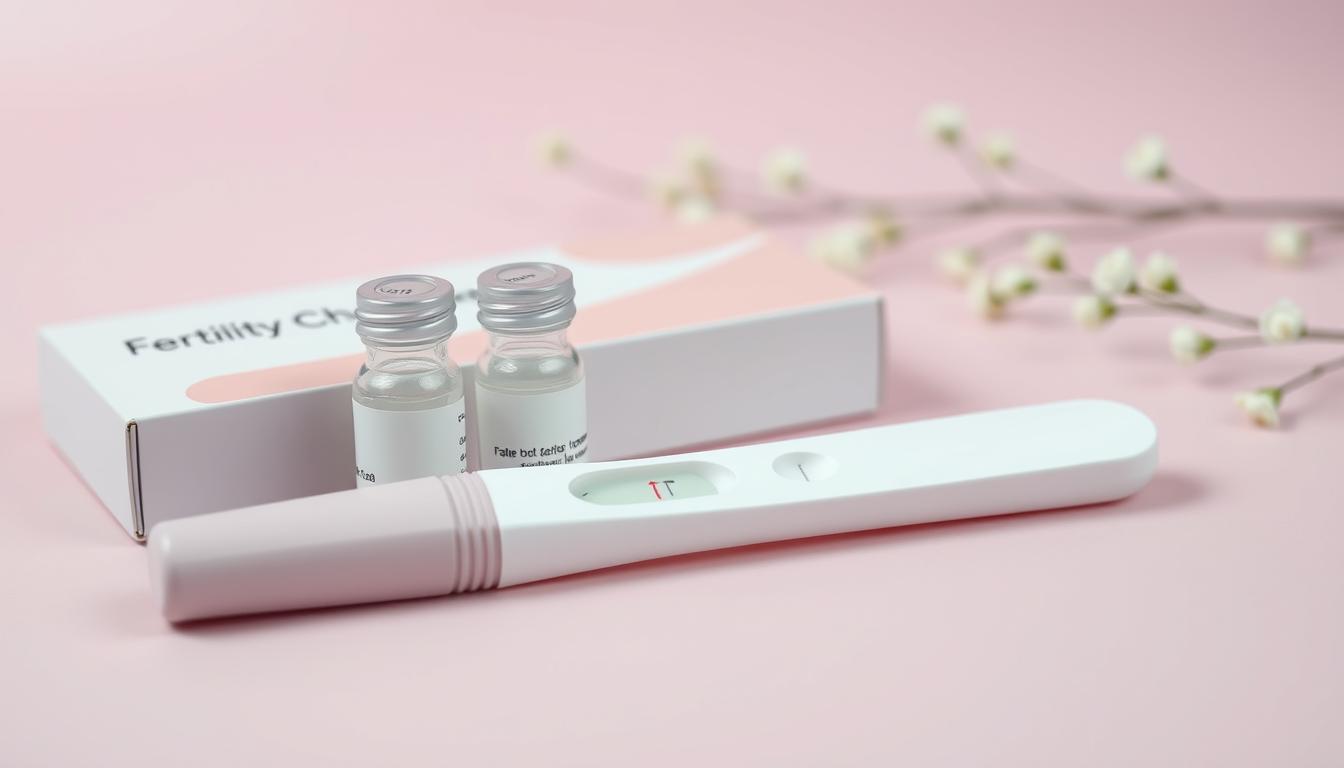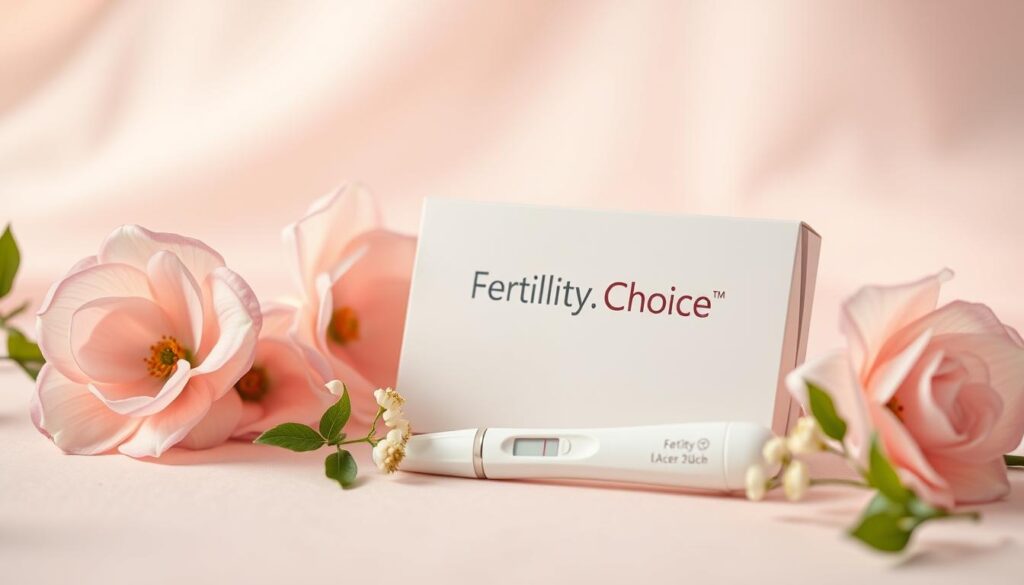
In South Africa, surrogacy is covered by Chapter 19 of the Children’s Act, 38 of 2005, which started on 1 April 20101. This law aims to lessen emotional pain for both surrogates and those wanting to be parents1. For women thinking about surrogacy, a female fertility test is key. It shows their reproductive health, which is vital for fertility testing for women2. The main law on surrogacy in South Africa is Chapter 19 of the Children’s Act, passed in 2005 and in force since 20103.
It’s important for both intended parents and surrogates to know the laws about surrogacy. A female fertility test helps women understand their reproductive health. This knowledge is crucial for making informed decisions about becoming a parent, which is a key part of fertility testing for women2. In South Africa, only altruistic surrogacy is legal. This means surrogates can’t get paid, only for direct costs2. The journey to surrogacy involves many professionals, like reproductive doctors, IVF coordinators, and lawyers1.
Female fertility is complex, involving physical and emotional factors. Regular fertility screening is key to understanding reproductive health. About one-third of infertility cases are due to female issues, showing the need for female reproductive health analysis.
Many things can impact female fertility, like age, lifestyle, and health conditions. For example, by the 40s, egg quality drops to 25% or less4. Also, Follicle Stimulating Hormone (FSH) is vital for egg growth, and low levels might mean no periods5.
Knowing about female fertility helps make better reproductive health choices. Regular fertility screening and female reproductive health analysis can spot problems early. This is important because high Anti-Müllerian Hormone (AMH) levels mean better chances of pregnancy4.
Female fertility tests are key to understanding a woman’s reproductive health. There are many tests available. The Female Fertility Test, for example, includes ovulation assessment and hormone testing for female fertility6. It helps check egg quality and spot hormonal imbalances that might affect fertility7.
The Couples Fertility Test is another option. It includes a semen analysis to check sperm quality and quantity6. It’s suggested for couples trying to conceive for over a year, or six months if the woman is over 357.
Some important tests in female fertility testing are:
Hormone testing for female fertility is a vital part of these tests. It helps find hormonal imbalances that might affect fertility6. Knowing about these tests is the first step for women to understand their reproductive health and boost their chances of getting pregnant7.
Understanding a woman’s reproductive health is key. This includes looking at hormone levels and ovulation8. A normal Follicle Stimulating Hormone (FSH) level shows healthy ovaries. But, high FSH levels might mean lower fertility8.
Many things can affect a woman’s fertility. These include egg quality, ovulation, and hormone balance8. Tests like the Female Fertility Test and the Couples Fertility Test offer insights. They help spot any fertility issues9.
When looking at test results, keep these points in mind:

Understanding fertility tests helps women manage their reproductive health. Female fertility evaluation and diagnostics are vital. They help women reach their reproductive goals10.
| Test | Normal Levels | Abnormal Levels |
|---|---|---|
| FSH | > 20 mlU/mL | |
| AMH | > 1.2 ng/mL |
A fertility test for women can give important insights into reproductive health. It helps make informed choices about family planning11. It can spot issues like ovulation problems or a low number of eggs, which can be treated12. It also shows how likely a woman is to get pregnant, helping her plan her reproductive health13.
Some key benefits of female fertility tests are:
By getting a fertility test, women can learn more about their reproductive health. They can then take steps to fix any issues11. This might mean changing their lifestyle, like eating better or stopping smoking, or getting medical help like fertility drugs or IVF12. In the end, a fertility test gives women the power to manage their reproductive health and make wise decisions about their future13.
| Age | Fertility |
|---|---|
| 20s-30s | Peak fertility |
| 35-40 | Fertility decline |
| 40+ | Significant fertility decline |
Choosing the right fertility test is key for accurate results and effective treatment. Fertility screening is vital for understanding reproductive health. Different tests meet various needs. Women under 35 should get tested after a year of trying, while those over 35 should do so after six months14.
Age, medical history, and lifestyle affect fertility. So, it’s important to consider these when picking a test.
There are many female fertility tests, like ovulation assessment and ovarian reserve testing. These help spot issues like irregular cycles or low sperm count. Knowing about these tests helps make informed choices about reproductive health.
When picking a test, think about the type, benefits, and risks. For example, ovarian reserve tests measure hormone levels and follicle counts15. Choosing the right test is the first step towards understanding fertility and making informed decisions.
Fertility testing and screening are crucial. They offer insights into reproductive health and help achieve goals14.
As women get older, their ability to have children decreases. This is because the quality and number of eggs they have goes down16. Tests can check how well a woman’s reproductive system is working, including how well she ovulates17. Knowing how age affects fertility is key for those trying to conceive.
Women under 35 are advised to try for a baby for 12 months without protection16. But for those over 35, this time is cut to 6 months16. This is because older eggs are more likely to have problems that make it hard to conceive17.
Tests can help women understand their fertility better18. These tests check if there are any issues with egg quality or quantity17. Knowing this information helps women make choices about their reproductive health.
Women should know how age affects their fertility and take steps to protect their reproductive health16. By focusing on female reproductive health analysis and ovulation assessment, women can boost their chances of having a healthy baby17.
A healthy lifestyle is key for female fertility. Eating well and exercising regularly can boost reproductive health and fertility18. But, smoking, too much alcohol, and being overweight can harm fertility19. For example, smoking can lower fertility by up to 13% in women and age ovaries early19.
It’s vital to get hormone tests for female fertility and evaluation. These tests find hormonal imbalances and ovulation issues that affect fertility16. By choosing a healthy lifestyle and getting the right tests, women can boost their chances of getting pregnant and improve reproductive health.
Some important lifestyle changes for female fertility include:
By making these lifestyle changes and getting hormone tests, women can manage their reproductive health better18. It’s crucial to talk to a healthcare provider to find the best plan for fertility needs16.
| Lifestyle Factor | Impact on Fertility |
|---|---|
| Smoking | Decreases fertility rates by up to 13% in women |
| Obesity | Affects ovulation and menstrual regularity |
| Excessive Alcohol Consumption | Reduces chance of becoming pregnant by 60% |
Testing for female infertility is key to spotting health issues that might stop women from getting pregnant. About 20-30% of female infertility cases are due to ovulation problems20. Women over 35 face a higher risk of running out of eggs, making it harder to conceive20. A fertility test can help women understand their reproductive health and spot problems early.
Medical conditions like polycystic ovary syndrome (PCOS) can lead to ovulation issues and infertility. These are often treated with drugs like Metformin20. It’s vital for women to get tested for infertility to find the right treatment. Women over 36 should see a doctor sooner because fertility drops faster in their mid-30s21.
Important things to think about during a fertility test include:
These factors can greatly affect fertility rates. It’s important to talk about them with a healthcare provider during a fertility test for women21.
Emotional wellbeing is key to reproductive health, mainly for women’s fertility. A female fertility test can spot problems, but it’s vital to think about the emotional side too. Fertility tests can be stressful and emotional, so looking after your emotional health is crucial.
Research shows 1 in 8 couples face trouble getting pregnant or keeping a pregnancy22. This can cause a lot of emotional pain, like anxiety and depression. In fact, those dealing with infertility feel as down as cancer patients22. It’s important to understand the emotional toll of fertility problems and offer support to those going through tests.
Being emotionally healthy can help with fertility, and there are ways to support your emotional wellbeing. This includes:
By focusing on emotional wellbeing and getting help when needed, women can handle the female fertility test better. Remember, fertility testing is not just about physical health but also emotional wellbeing22.

| Emotional Wellbeing Support | Description |
|---|---|
| Counseling or Therapy | Address emotional distress and develop coping strategies |
| Stress-Reducing Techniques | Practice meditation, yoga, or other techniques to reduce stress |
| Support Network | Build a network of friends, family, or support groups for emotional support |
Relationships are key when it comes to female fertility. A supportive partner can greatly help a woman on her fertility journey. Fertility screening and female reproductive health analysis are crucial for understanding a woman’s reproductive health. About 1 in 8 couples in the U.S. face infertility, showing how vital these tests are23.
A woman’s relationship can influence her fertility. Stress and lack of support can harm her reproductive health. Women with supportive partners are more likely to get tested and analyzed, which can help them conceive24. Important factors in a relationship include:
Understanding how relationships affect fertility can help couples support each other. They can get tested together and make lifestyle changes to boost their chances of pregnancy23. This way, they can strengthen their bond and support each other’s reproductive health.
A supportive relationship is vital for a woman’s fertility journey. By focusing on communication, support, and reproductive health, couples can increase their chances of getting pregnant. This also helps build a stronger, more loving relationship24.
| Factor | Impact on Fertility |
|---|---|
| Supportive partner | Positive impact on fertility |
| Stress and lack of support | Negative impact on fertility |
Understanding female fertility and the need for fertility testing is crucial25. These tests give vital insights for those trying to conceive, facing challenges, or planning for the future26. They help identify issues and improve reproductive health, boosting chances of a successful pregnancy.
Fertility tests, like ovulation and hormone assessments, provide key information25. High FSH levels or abnormal hormones can signal problems like PCOS25. Tests like ultrasound can also find issues like fibroids or blocked tubes.
The journey to becoming parents can be tough, but starting with fertility tests is a big step27. Women under 35 should test after 12 months of trying, and those over 35 after 6 months27. Knowing your fertility status helps make better choices and explore options, from lifestyle changes to medical treatments.
Adding fertility testing to your reproductive health plan can empower you26. It makes the path to parenthood clearer and more reachable. With the right info and support, becoming a parent becomes more attainable.
Stay Connected and Get Personalized Assistance
Thank you for reading! We hope you found this post helpful and informative. If you have any questions or need further assistance, please reach out. We’re here to help you on your journey
